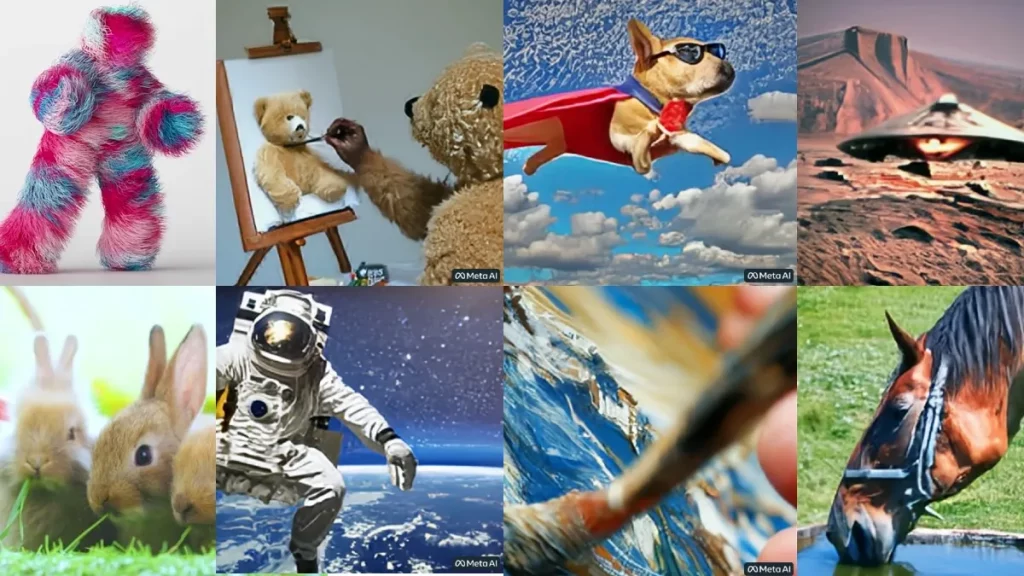

While the world is still trying to come to terms with DALL.E, Midjourney, and Stable Diffusion, arguing a violation of intellectual rights to images randomly pulled from the Internet, the CEO of Meta (NASDAQ: META), Mark Zuckerberg, talks about the newly launched artificially intelligent (AI) program called Make-A-Video that creates text to videos using descriptions.
“All of these videos were generated by an AI system that our team at Meta built. We call it Make-A-Video. You give it a text description and it creates a video for you. We gave it descriptions like: “a teddy bear painting a self-portrait,” “a baby sloth with a knitted hat trying to figure out a laptop,” “a spaceship landing on mars,” and “a robot surfing a wave in the ocean.” This is pretty amazing progress. It’s much harder to generate video than photos because beyond correctly generating each pixel, the system also has to predict how they’ll change over time. Meta AI Make-A-Video solves this by adding a layer of unsupervised learning that enables the system to understand motion in the physical world and apply it to traditional text-to-image generation. We plan to share this as a demo in the future. In the meantime, enjoy the videos…” Zuckerberg writes on Facebook.
The videos were made by a computer using text as input and deep learning using image synthesizers like GPT-3 and LAION-5B to create the final product. Building on Meta AI’s recent advances in generative technology research, the company promises brief, “high-quality” video snippets generated by its algorithm.
Meta AI Make-A-Video is Facebook’s latest text-to-image generator; earlier this year, the company unveiled Make-A-Scene, modeled after DALL-E. The team at Meta wants to “be deliberate” when developing “new generative AI systems like this, as stated in a press release.
“Make-A-Video increases the openness of the research by using datasets that anybody may access. We are publishing our findings on generative AI for others to critique, and will keep honing our methodology with the help of our responsible AI framework.”
Following yesterday’s announcement that DALL-E is now available to the general public, Meta has taken a giant leap forward in artificial intelligence–image-generating technology. The removal of the DALL-E waiting list was significant because the company is still widely recognized as a pioneer in the emerging field of artificial intelligence picture generators. Stable Diffusion and Midjourney, on the other hand, are coming up fast.
It’s not shocking that Facebook wants to become engaged, but how it stacks up against competitors won’t be clear until users outside of the corporation start using it. Google has shown off some impressive-looking examples from its Imagen tool, but the search giant has been mum on any release details. ♦
Dear Reader,
First, thank you for your precious time reading the stories (without paywalls) I publish on Startups to Enterprises covering the EU, China, the US, and India. Second, I request you to contribute financially (any amount) to help me sustain this as an independent digital business news media.
If I receive a request for a sponsored post, I ensure I see merit that is meaningful for erudite and informed readers like you. In the bargain, I lose out on sponsorships wherein I need funds to sustain this effort. Your contribution helps me stay afloat.
Please note that your contribution is treated as revenue generated and not a donation; hence, there are no 80G or other donation certificates. In fact, as I am eligible to pay for the revenue generated, I will pay taxes on the same.
You deserve to know that I abide by journalistic ethics and practices to ensure I tell the stories as is, unbiased. You can follow us on Facebook, Linkedin, and Twitter, bookmark us on Google News, and finally, PayPal us here.
Founding Editor
Linda Ashok

